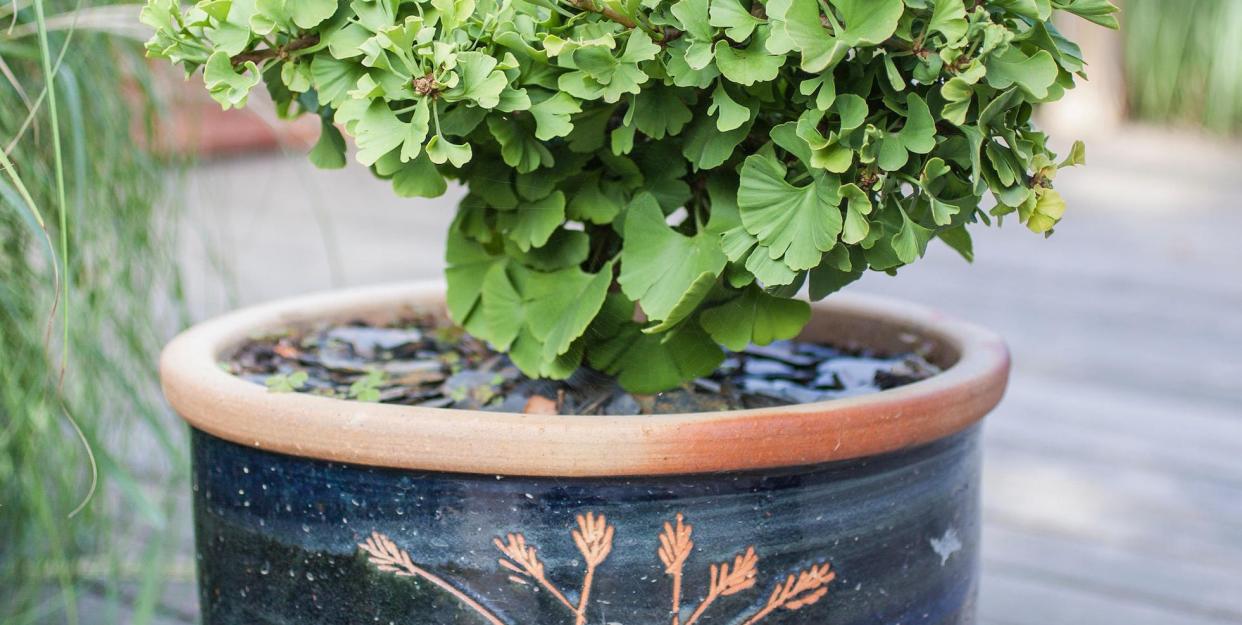Sustainable container gardening: 6 tips to get you started

You might think a small container garden wouldn’t offer many opportunities to be environmentally friendly, but think again! With a few minor concessions, they can be a really sustainable option. Here are some easy sustainable container gardening ideas that you can implement in your own outdoor space.
• Choose drought-tolerant plants
Conserving water in the garden is a challenge, especially in summer, but you can significantly reduce water consumption by going for drought-tolerant plants.
• Water in the evening
Generally for all garden plants, water in the evening rather than the hottest part of the day, as less water is lost to evaporation when the temperature drops. Add moisture-retaining crystals to larger pots, and use 'grey water' such as bathwater.
• Reuse or recycle your old plant pots
Once you've finished with them, donate them to local nurseries or allotments, or give to someone you know who grows from seed.
• Use eco-friendly options
If you usually start your garden plants from seed, cardboard kitchen towel tubes cut into small sections make a good alternative to plastic seed trays. If you're going to use pots, opt for biodegradable and compostable ones. And there's no need to buy new: choose recycled objects such as dolly tubs or vintage garden containers from reclamation yards or car boot sales.
• Plant a mini forest
Create a forest in your pots or window boxes to release oxygen and offset carbon dioxide. Miniature versions of Douglas fir, spruce, true fir, beech and maple release the most oxygen.
• Make your own compost and fertiliser
Even if you only have a balcony, it's still possible to produce your own compost. You'll just need a container for transforming your kitchen waste – or other organic waste such as cut plants– into a rich peat or liquid for your plants. Why is it such a good thing to do? Well, not only are you recycling waste, but you're also giving back to your plants with a natural fertiliser that will help them grow and prevent pests. It's win-win!
Follow this step-by-step guide on how to make compost.
To save time and get the most efficient results, there are two great products that are space-saving and visually appealing: the Urbalive composter, in which live worms will break down your waste; and the Organko 2 Bokashi compost bin, which uses micro-organisms. They have good ventilation and all the different layers you need to ensure everything rots down effectively.
Now here's my pick of drought-tolerant and mini forest plants:
MINI FOREST PLANTS
Acer Palmatum 'Dissectum'
Corylus avellana contorta 'Red Majestic'
Fagus Sylvatica 'Purpurea Pendula'
Ginkgo biloba
Juniperus chinensis 'Stricta'
Picea glauca 'Conica'
Pinus mugo 'Mops'
Sciadopitys verticillata
DROUGHT-TOLERANT PLANTS
Achillea millefolium 'RoseMadder' or 'Sally'
Aeonium 'Zwartkop'
Artemisia 'Powis Castle'
Ceanothus
Cistus creticus
Eryngium variifolium
Euphorbia characias
Festuca glauca
Lantana camara
Lavandula stoechas
Osteospermum 'Serenity Dark Purple'
Pentas lanceolata
Perovskia 'Blue Spire'
Salvia namaensis
Sedums
Sempervivum calcareum
Verbena rigida
Follow House Beautiful on TikTok and Instagram.
You Might Also Like



